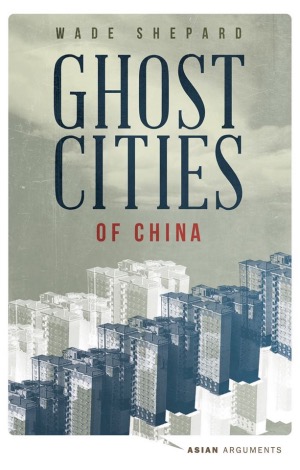Human urine is collected in the public toilets of Taizhou, China to be made into medicine.
“Do you know why people are peeing in buckets in the bathroom?” an American friend asked after exiting the men’s room at a bus station in Taizhou.
Perhaps unfortunately, I knew why.
“They collect the piss and make medicine from it,” I stated simply.
My friend thought that I was joking. I wasn’t.

I’ve been in at least a dozen bathrooms in Taizhou that were equipped with rows of buckets placed inside or on top of the urine troths. Rather than peeing down the drain, men go directly into the buckets — which are collected and emptied periodically throughout the day, the contents being shipped off to nearby pharmacological plants or bio-med research facilities. Byproducts from these collected stores of human urine are then used to make medication or for medical research.

Medical urine collection in public toilet in Taizhou, China
A protein called Urokinase is a plasminogen activator that is naturally present in human piss and can be used as an thrombolytic agent for various ailments, such as deep venous thrombosis, pulmonary embolism, myocardial infarction, and occluded intravenous or dialysis cannulas. Currently, urokinase is marketed as a drug known as Kinlytic (source: Urokinase, Wikipedia).
What is Kinlytic?
Urokinase is a man-made product developed using a protein that occurs naturally in the kidneys. Urokinase is a thrombolytic agent that works by dissolving blood clots.
From Beijing Cream:
Urokinase is indeed an ingredient in drugs to treat cardiovascular diseases, and can treat cerebral thrombosis, acute myocardial infarction and other thromboembolic diseases. But from a medical point of view, in order to guarantee the freshness of the samples, first, donors have to be healthy individuals, and second, the urine enzymes need to be extracted within eight hours of collection…

Chinese guy using bucket in urinal
This urine derived medication is given to patients all over the world who need to have their pipes cleared out. Approved for use in 1978, urokinase was administered to 4 million patients in the USA, but was banned in 2009 “due to lack of an approved manufacturing facility.” (No shit, they are taking random samples from public toilets here in China). But this is looking as if it is going to change, and it is estimated that the reintroduction of this drug to the U.S. market will be a $400 million dollar business.
“In the opinion of the parties, urokinase is simply one of the most useful, safe and effective thrombolytic drugs ever used,” ran an article on the website of the pharmaceutical company that now owns the U.S. rights to it.
Just don’t tell the patients that the substance being injected into them was derived directly from human urine.
Perhaps one of the side effects of being in a city that has such a massive bio-medical and pharmacological research and production industry nearby is the knowledge that the urine I leak into the buckets of public bathrooms does not go to waste: it is made into medicine and shipped around the world for human consumption. I’m not sure if my reduce, reuse, recycle mentality goes this far, but, hey, on the chance that my urine can save some lives I’m aiming for the bucket.
You’re welcome.
SUPPORT
The only way I can continue my travels and publishing this blog is by generous contributions from readers. If you can, please subscribe for just $5 per month:NEWSLETTER
About the Author: VBJ
I am the founder and editor of Vagabond Journey. I’ve been traveling the world since 1999, through 91 countries. I am the author of the book, Ghost Cities of China and have written for The Guardian, Forbes, Bloomberg, The Diplomat, the South China Morning Post, and other publications. VBJ has written 3715 posts on Vagabond Journey. Contact the author.
VBJ is currently in: New York City
Next post: Get Travel Gear From Vagabond Journey This Holiday Season
Previous post: Reykjavik Iceland Photos

